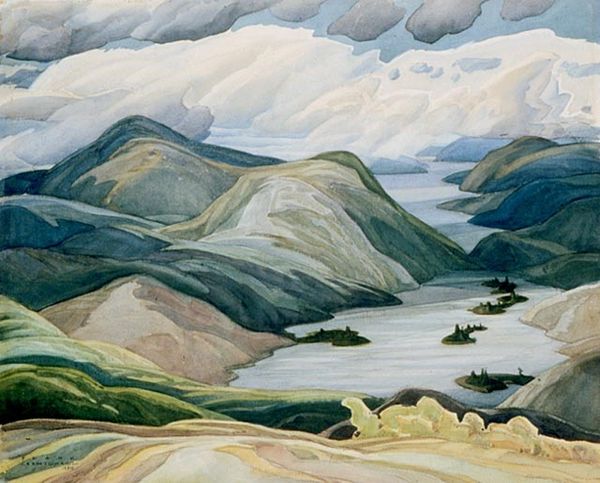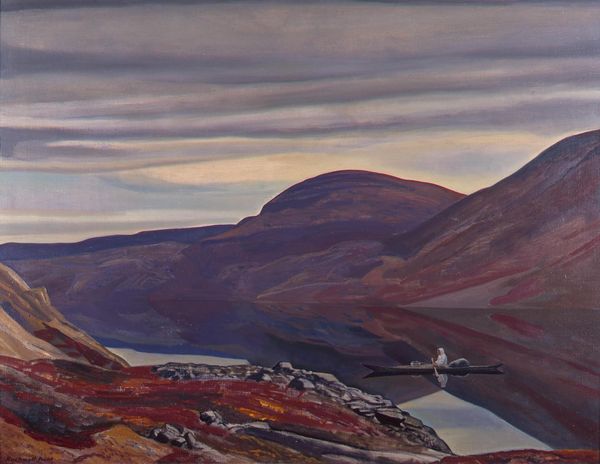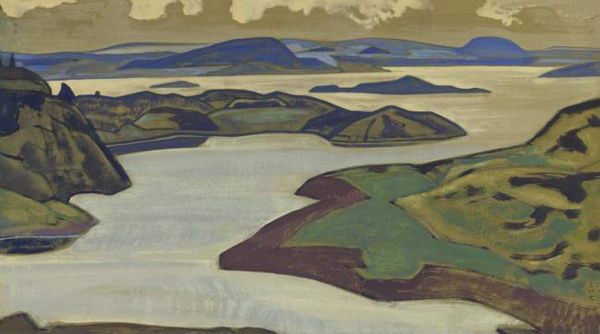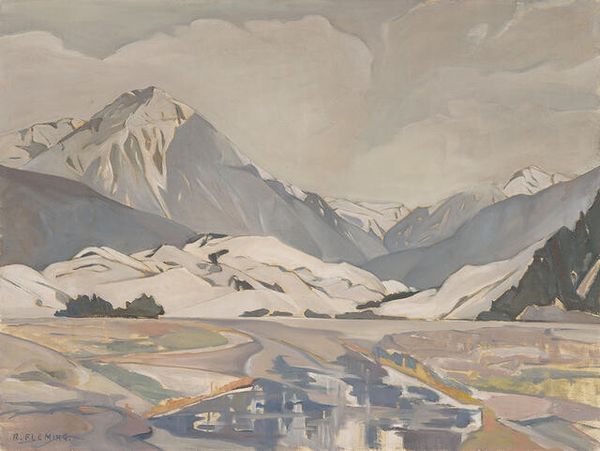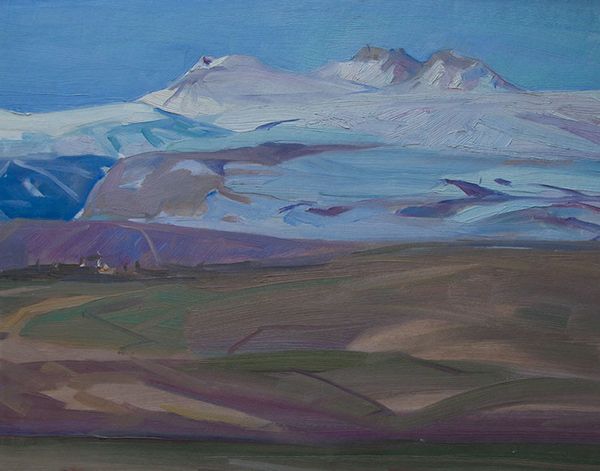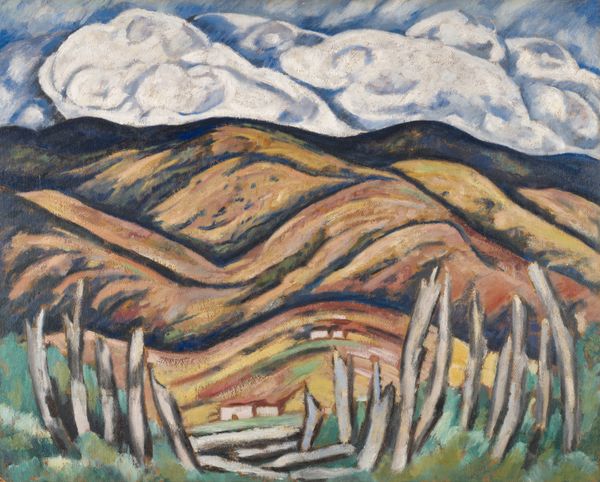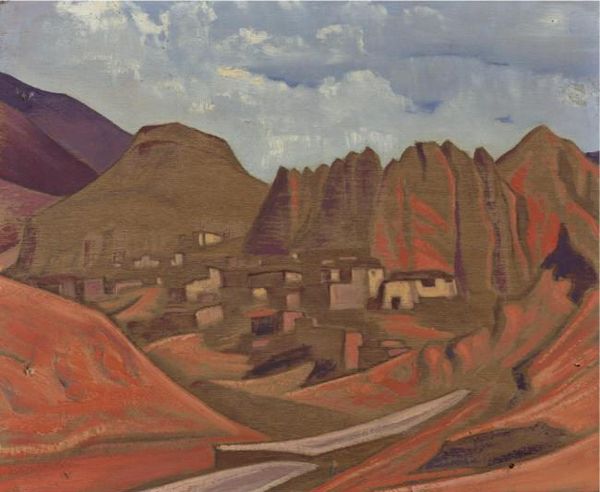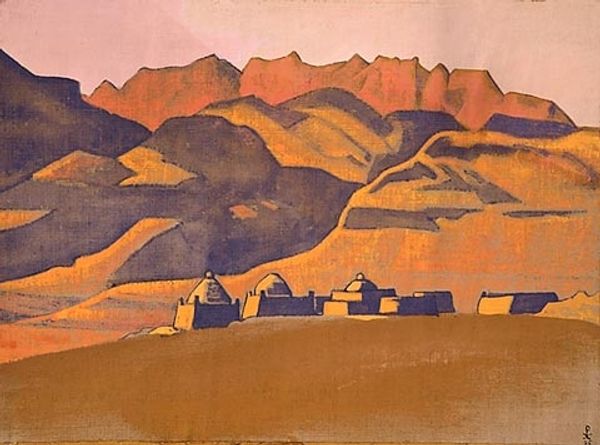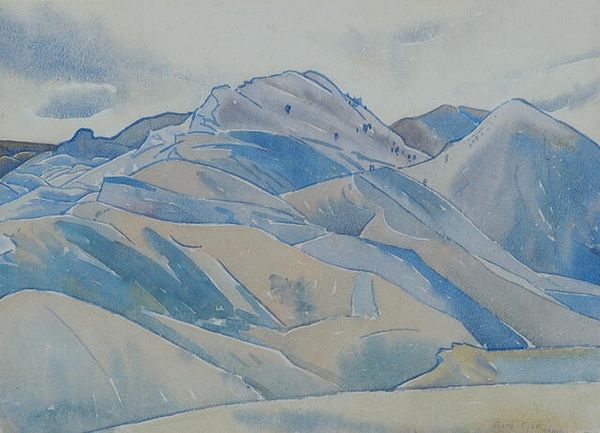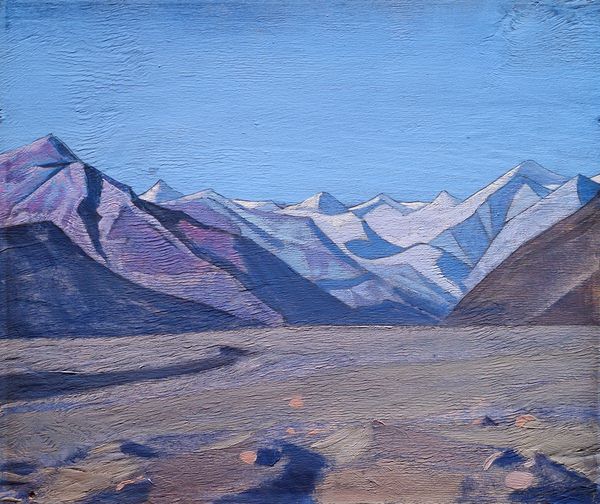
painting, watercolor
#
painting
#
landscape
#
oil painting
#
watercolor
#
group-portraits
#
regionalism
#
expressionist
Copyright: Public domain
Curator: "Bisset Farm", a 1933 watercolor by Franklin Carmichael, shows a wintery landscape with a farmhouse and outbuildings nestled beneath rolling hills. The pervasive white makes me think of isolation and simplicity. How would you describe what catches your eye? Editor: I find it interesting how Carmichael has depicted a seemingly rural and idyllic scene. There's a sense of sparseness here – it almost feels lonely, especially with the snowy, washed-out colors. What’s your interpretation of it? Curator: Considering its creation in 1933, during the Depression, this piece might offer insight into the realities of rural labor and land use. Look at how the farm buildings are depicted. They aren’t romanticized, are they? More functional. What does the very act of using watercolor – a less 'valuable' medium than oil paint – tell us about the economics of artmaking during this period? Is this high art or craft? Editor: That's a good point. I hadn’t considered the watercolor medium as a commentary itself. It almost brings this work closer to documentation rather than just an aesthetic experience, like this was not meant to look “perfect”, but factual. Curator: Exactly. And what about the brushstrokes themselves? Think about the labor involved. The repetitive strokes used to depict the rolling hills. Doesn't that hint at the repetitive labor that shapes both the land and the artwork itself? Are there references that tell you about how farmers were challenged at the time? Editor: It certainly does. I never considered the artist's labor being representative of other workers too. Curator: So, viewing it through a materialist lens makes us question traditional artistic value. We see beyond the picturesque, questioning the socio-economic circumstances of both the subject and the artist. Editor: This reframing definitely shifted my perspective. I initially saw a pretty landscape. Now I’m considering the labour, resources, and economics interwoven into its creation and content. Curator: That’s precisely it. Seeing art not as isolated masterpieces, but as products of specific conditions.
Comments
No comments
Be the first to comment and join the conversation on the ultimate creative platform.
